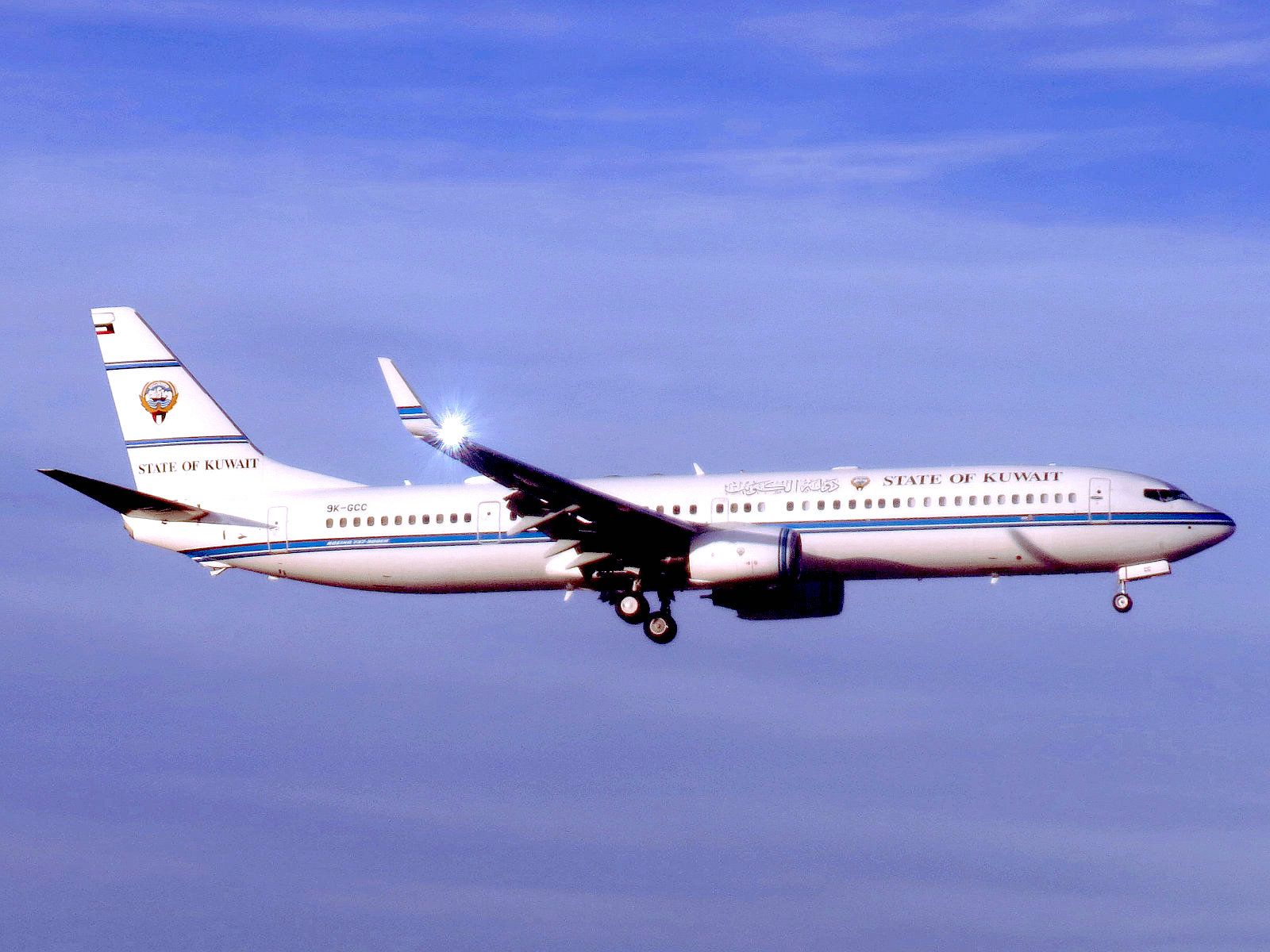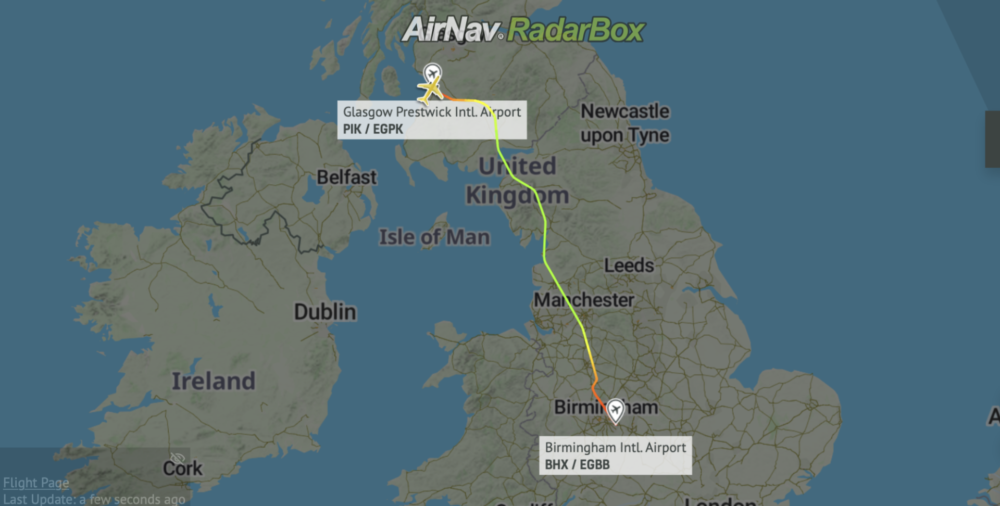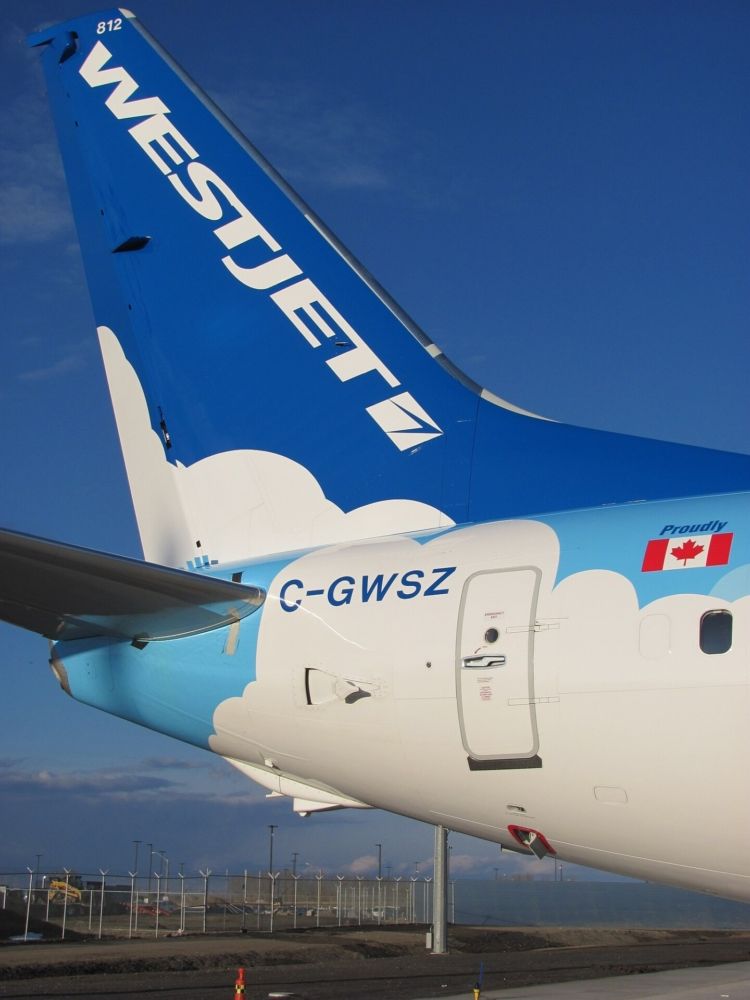On October 31st, a Boeing 737-900BBJ operated by the Kuwaiti government experienced a tail strike while taking off from Glasgow Prestwick airport. The aircraft and its passengers were in the United Kingdom between October 31st and November 3rd as part of the United Nations Climate Conference known as COP26. The strike was captured on video as the aircraft departed for Birmingham.
Captured on video
The tail strike involving the 737-900BBJ took place on October 31st and was captured by planespotter Daniel Sander and posted to his YouTube channel. An aviation enthusiast and contributor to numerous aviation media outlets, Sander was at Glasgow Prestwick Airport (PIK), hoping to capture video of numerous rare aircraft descending on Glasgow for COP26.
"This video is from Day One, when the world leaders began to arrive, into Scotland. This Kuwait Boeing 737-900BBJ arrived from Kuwait, then departed to Birmingham for parking," Sander notes. "However, on the Takeoff roll, as the plane rotated and began to lift off the ground, the tail hit the runway. It's noticeable, as you see brown smoke appear, when it hits the runway."
Captured in 4K and played back at regular speed and then in slow motion, the video is embedded below:
Sander adds that the aircraft continued on its flight to Birmingham as normal. RadarBox.com data shows that the plane departed Glasgow Prestwick at 16:09 and landed at 16:53. It was unknown whether the pilots reported this incident on ATC or not.
Love aviation? Find out what the future holds at the Future Flying Forum 2021, book your seat today.
The reasons for tail skids
In 2006, Boeing delivered its first 737 equipped with a short-field runway package to GOL. According to the planemaker, these 737 design enhancements "allow operators to fly increased payload in and out of airports with runways less than 5,000 feet long."
Boeing notes that the design enhancements include a two-position tailskid that "enables reduced approach speeds, sealed leading-edge slats that provide increased lift during takeoff, and increased flight spoiler deflection on the ground that improves takeoff and landing performance."
The short-field design package is optional for the 737-600, -700, and -800 but is standard for the 737-900ER. The changes allow for increased payload capability for landing up to 8,000 pounds on the 737-800 and 737-900ER.
It's not just the 737, however, that can be fitted with tailskids, as an old Boeing article states:
"And some models of the 737, 767, and 777 have a tail skid that prevents damage from most takeoff tail strikes. However, these devices do not guarantee protection for landing tail strikes and some takeoff tail strikes. They also reduce tail clearance distances."
Additionally, as we've covered in previous articles, potential balance issues present with the Boeing 737-800 and -900 are well-known by now. If cargo or passengers are present rear of the aircraft's center of gravity without sufficient counterbalance at the front, tail sitting could result if the aircraft is parked- or a tail strike if the jet is moving. Indeed, the plane's design means that a tail stand can be required when parking, loading, or offloading the aircraft.
What do you think of this incident? Considering that Boeing has a tailskid installed for these situations, can it even be called an incident? Or is it a relatively normal and expected occurrence? Let us know what you think by leaving a comment.



